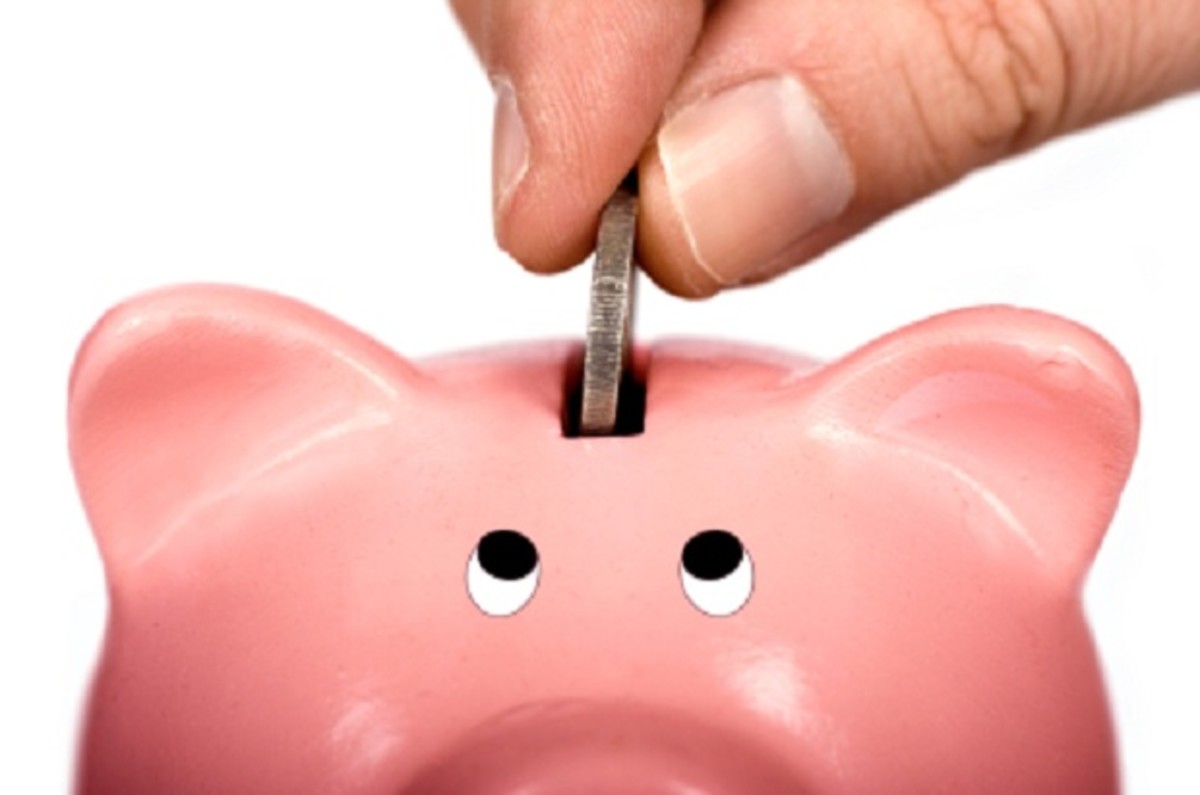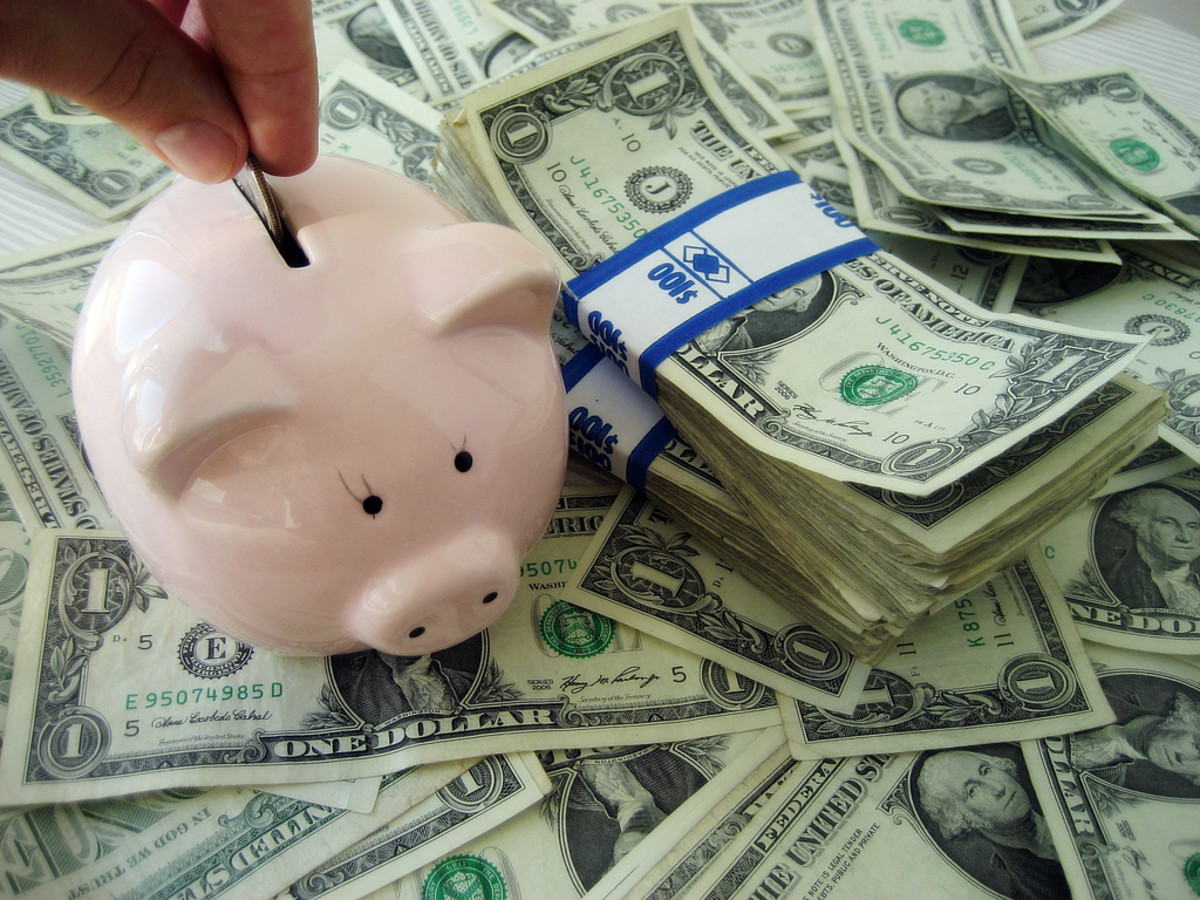Easy Ways to Save $100/month
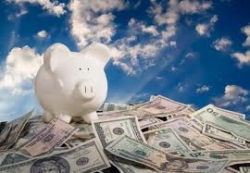
Need to squeeze out a bit of extra money each month? It's really simple to save money with these ideas!
It's possible for anyone to find an extra $100/month and not have to sacrifice that much. It just requires simple things like making your house more energy efficient or taking a few extra minutes to pack your lunch the night before. Or what about avoiding using the bank machine at night, when you have to pay fees? It's really not that hard! Read on for lots of amazing tips from "The Queen of Thrifty" as my friends call me.
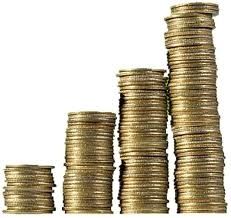
What can this $100/month get me?
$100/month, invested in the stock market and assuming a return of 5% (quite low compared to historical standards) can get you:
$41 000 after 20 years
$153 000 after 40 years
$456 000 after 60 years.
It really is simple to save for your retirement!
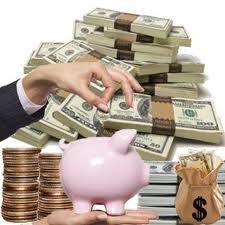
Tip #1: Avoid ATM Banking Fees
Most banks don't charge withdrawal fees at an ATM if you withdraw money during their business hours, and of course by using the card associated with their bank. If you go to a different bank and withdraw money, or do it outside of business hours, you'll often get charged $1 or 2 per use. And some even charge fees for using your debit card. Read the fine print carefully. Anyway, if you do this everyday, it can add up fast to more than $30/month!
My solution is to just carry around a decent amount of cash, so I never get stuck in this situation. Maybe $200 or so at a time. When I start to run low, I'll make sure I go to the bank during business hours and withdraw another couple hundred of dollars. And I pay no fees for ATM usage. Perfect!
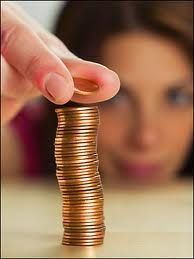
Tip #2: Adapt to cooler or warmer temperatures inside your house
According to one site on green living:
Each degree you turn down the heat saves 3 percent of heating costs, while each degree you raise the temperature of your air conditioner saves 3-4 percent of cooling costs.
So, in the wintertime, turn down that heat to 19 or 20 degrees Celsius and watch the money flow into your bank account. Wear pants, and a sweater to stay warm. If you're watching TV or staying stationary for a long time, grab a blanket to keep the body heat it. Turn it down even more, to around 15 degree at night and use extra blankets to stay warm. I also wear flannel pajamas that keep me warm and toasty.
Anyway, imagine that your heating bill is currently $200/month and you keep the temperature at 23 degrees. Now, turn it down to 19 and even lower at night. Your daytime savings alone would be $24. If you add in nighttime it would be well over $30 each month!
Simple and easy? Yes! Your body will adapt in no time.
Warm fuzzy Blankets to keep you warm in the winter - Without spending lots of money on heating

Tip #3: Go meatless sometimes.
Did you know that the average North American eats way too much meat? You really don't need to eat meat at every meal, much less twice a day. How about getting your protein through some other sources such as tofu or eggs. It's better for your health, the environment and your wallet. Meat is generally much more expensive than other sources of protein at the supermarket.
My favorite way to cook tofu is to put salt and pepper on both sides. Fry it on both sides in a very hot pan with some oil. It's delicious served warm on a salad.
And for eggs, how about an omelet. Fry some vegetables, add the eggs and cook until almost done. Add a bit of cheese, salt and pepper and you have a delicious meal. Eat with some bread.
What about making a vegetarian chili instead of your normal one with meat?
Make some nachos with lots of cheese, vegetables and homemade salsa on the side.
Simple and not a sacrifice! Really.
Vegetarian Cooking - An easy way to save money on your food bill
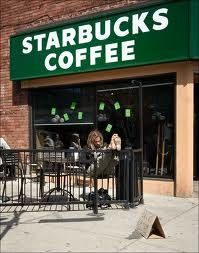
Tip #4: Make Coffee at Home instead of going to Starbucks
Always getting your coffee at the local Starbucks or Tim Hortons can cost you over $100/month. And that's just the basic cup. That's not even the gourmet ones you can get with whip cream and all the frills. It's an expensive habit. If you have a coffee maker, and buy your coffee grounds in bulk, it costs less than $0.10 per cup, milk and sugar included! It's even cheaper if you buy a coffee grinder and roast and grind your own beans. And, you can even buy a thermos and take some to work or school with you. It's so simple and will save you at least $80/month if you drink coffee everyday.
Coffee Makers and Grinders
Frugal Living Tip: Choose your Friends Wisely

Tip #5: Bring your lunch to work or school
In the frantic few minutes before you have to run to work or school, packing a lunch is often the thing that gets left out. It's so simple just to buy it somewhere. It's true that it's simple, but it's costing you a lot of money. Let's assume that you spend $6/meal (and this is a lower-end estimate: most people spend more). At 22 working days, that's $132/month.
The secret is packing your lunch the night before. You'll be relaxed and have time to do it in a non-stressful way. And it will be substantially cheaper, usually around $1/meal. That's a savings of over $100. And you also might notice a huge difference in your waistline by eating your own lunches, minus all the carbs, fat and sugar.
Need some ideas? Check the sites listed below:

Tip #6: Go clothes shopping less!
The average American household spends $1900/year on clothing. That is about $150/month. Most people have too many clothes and never wear many of them. How many of you have clothes hanging in your closet with tags still on them? How many pairs of jeans do you have?
An easy way to save $100/month is to just not go shopping for clothes. After all, almost everyone has enough to wear a different outfit for every day of the month. Why not just wear your clothes until they wear out? And when you're down to your last 2 pairs of jeans, go buy one more. Only have 3 pairs of work pants? Go buy one more. Your last pair of running shoes is getting worn out? Go buy another pair.
Don't go shopping just for fun when you don't really need anything! It's a big money drain. And if people aren't friends with you because you're not wearing the latest fashions, then perhaps they aren't really worth having as friends?

Tip #7: Use the Library!
I know it's a bit of *novel* idea to use the library these days but it really can provide for most of your entertainment budget each month! Most libraries have not only books, but magazines, DVD's and music.
Suppose you have 2 magazine subscriptions that cost you about $5/month. And you buy two books, which add up to $15. And one DVD: about $10. And one CD, or you download a few songs: another $10. That adds up to $40/month. And that's just for one person. What about all the other people in your family?
If you go to the library, that $40 gets reduced to the money you spend on gas or bus-fare to get there. Probably under $5. Money saved!

Tip #8: Walk or Bicycle
Short trips around town can add up substantially. It's not only the gas but the wear and tear on your car from being started up so often just for very small distances. If it's less than a 5 minute drive, you can probably walk it under 30 minutes. It's it's less than a 15 minute drive, you can probably ride your bike in less than an hour. If you walk or bike 3 or 4 times a week, the savings can be over $30/month easily.
If you get serious about it and start walking or bicycling everywhere, you can even forgo the gym membership and just get all your exercise this way! Assuming your gym membership is $100 and your savings can be closer to $200 or even $300/month. If you're going to exercise, why not do it in a way that's smart for the environment, enjoyable because it's outside, and saving you lots of money.

Tip #9: Only Drink Tap Water
Almost all places in the first world have tap water that is safe to drink. In North America, it's some of the best in the world so there's really no reason not to drink it. If you really don't like the taste, why not get a Brita Filter? They cost a bit of money, but the filters last for months and months and it will be far cheaper than buying bottled water. Also, if you're out and about, bring a water bottle and just fill up somewhere instead of buying a new bottle each time.
Plastic bottles are terrible for the environment and not that easy to recycle. It's also terrible for your bank account. Say you drink 2 bottles of water everyday, costing you $1 each. That's over $60/month. If you only drink tap water, which is essentially free then you have all that extra money. And what if your whole family drinks bottled water? That's an astounding amount of money each month.
Brita and water bottles
Tip #10: Cut the Cable
Most people have high-speed internet at home. If you have internet, there's no need to have Cable TV, or even a TV at all. It's so easy to download any TV, or movies that you could possibly want to watch. You can also stream, for free on many different sites. It's even better because it's minus the commercials. Or, even better, borrow some DVD's from your friends, and watch on the computer.
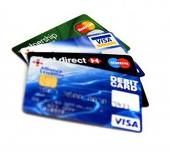
Tip #11: Use a Money-Back Credit Card
Many credit cards offer you money back, up to even 1 or 2% of your spending each month. So, try to find one of these cards and put all your payments on it. See if you can even put big purchases like a car, or mortgage payments on it. Then, you just pay off the balance each month and don't pay any interest. If your family spends $2000/month, that's $40 if you get 2% back.

Tip #12: Drive Slowly and Smoothly
If you're a "jackrabbit" type driver, racing from light to light and weave in and out of traffic, you'll spend a lot of money on gas each month. This also increases the wear and tear on your car. Instead, just accelerate slowly off the stops, and coming into a stop, just take your foot off the gas and slowly cruise in. The goal is to only have to touch your brakes lightly at the end.
Also, don't speed because it will cost you a lot more than the tickets you get. It uses up way more gas than necessary. Instead, just drive the speed limit.

Tip #13: Eat at home
Eating out at restaurants, even cheap fast-food restaurants can be very expensive. At least $5/meal for fast food, and 2-4 times that for a regular meal out. The quality/healthfulness is often dubious as well. You can easily save $100/month if you eat at home instead of going out once/week. You now eat at 3 times a week? Cut back to 2. You eat out every meal?! Cut that down to 2 or 3 times and you'll be amazed at your savings.
About you
Are you frugal?
Frugal Living Tip: Get Organized
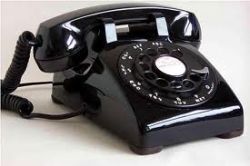
Tip #14: Disconnect the land-line
Everything seems to have a cell-phone these days, as well as Internet at home. If you have these 2 things, you really don't need a land-line. Just get a cell-phone for short calls or text messages and use Skype credit for longer calls. Simple and cheap and it can save you over $50/month.
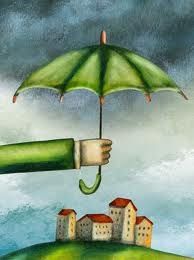
Tip #15: Shop Around for Insurance
It's very simple with the internet to search around for better prices for your car, health, life and home insurance. Spending a couple hours each year before you renew your insurance can easily save you $100/month!

Tip #16: Make Your Home Energy Efficient
Although it's a bit of an investment, it can pay off in the long-run to make your home energy efficient. When light bulbs burn out, replace them with energy efficient ones. They'll last longer, and cost you much less in energy each month. Put your computer, printer and speakers on a single energy bar. Ditto with your home entertainment system. Turn it off at night so that you reduce your passive energy use. The beeping red light on your TV uses an astounding amount of energy!

Tip #17: Go to the dentist once a year for a cleaning and check-up
If you don't have insurance, it will cost you a little bit of money to go for a yearly cleaning and checkup. However, by doing this you can hopefully avoid big bills in the future. And, it's even better if you have insurance that covers a yearly dental visit. To fill a little cavity really isn't that expensive ($100 or so). To let it get bigger and bigger for a couple years means that you'll likely require a root canal which can cost thousands of dollars. Over the long-term, you'll save money by taking care of your dental health.







